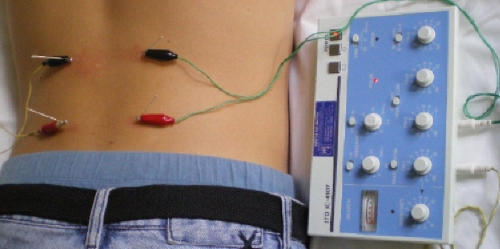Source: The Journal of the American Medical Association Jul 22, 2018 7 years, 4 months, 1 week, 6 days, 14 hours ago
A new study suggests acupuncture could be effective
About half of women ages 40 to 60 experience bladder leaks, or urinary incontinence, according to the American College of Physicians. And a condition called stress incontinence—leaking urine when you cough, sneeze, exercise, or laugh—is one of the most common types.
Treatments, which often include drugs and surgery, can be problematic and costly, but a study out today in JAMA offers encouraging evidence that acupuncture may be an easier alternative.
Chinese researchers looked at 482 women with stress incontinence. Half received a type of
acupuncture called electroacupuncture (EA), where needles that have been inserted into the skin are stimulated with low-level electric current, while the others received a placebo technique.
After six weeks of treatment, the average amount of urine expelled during tests designed to stress the bladder dropped by 9.9 grams (about a third of an ounce) in the acupuncture group compared with 2.6 grams in the women in the placebo group. That’s a bigger improvement than what's been seen in studies using an
exercise program to strengthen pelvic floor muscles.
In addition, 38 percent of the acupuncture group reported that the number of times they experienced bladder leakage was cut at least in half. Just 23 percent of the placebo group had similar results. The acupuncture group continued to experience less leakage and reported greater improvements on a quality-of-life questionnaire 24 weeks after the treatment ended.
How Electroacupuncture Might Help
In this study, the researchers inserted needles into the sacrum, at the lower end of the spinal cord, and left them in for 30 minutes. Although they aren’t sure exactly how acupuncture works to affect
stress incontinence, they believe it may target part of the pudendal nerve, which controls the muscle that helps close the urethra, and help improve contraction of the pelvic floor muscles.
Acupuncturists use EA for a variety of problems, including pain, anxiety, and neurological conditions.
“Electroacupuncture has different effects depending on the frequency and intensity of the current you use,” says acupuncturist Kathleen Lumiere, a licensed acupuncturist and an associate professor of East Asian medicine at Bastyr University in the Seattle area. “It can be very calming or excitatory. The level they used in the study—50 Hertz—is more excitatory to try to turn on those pelvic floor muscles and nerves.”
Although the study was large and randomized, there are some limitations to it. With an average body mass index [BMI] of 24, the women in the study were not overweight, "which isn’t your ‘average’ woman with
;stress incontinence in the U.S.,” says Mark Moyad, the Jenkins/Pokempner Director of Preventive & Complementary Medicine at the University of Michigan Medical Center in Ann Arbor. (Age, obesity and smoking are risk factors for stress incontinence, and childbirth is believed to play a role as well.)
If You Want to Try Electroacupuncture
“For women who are frustrated with past treatments or looking for a noninvasive option before or after surgery, electroacupuncture could be helpful," says Moyad. "But before considering any treatment for incontinence, work with a urologist or urogynecologist to determine the exact type of incontinence you have. That will determine the best treatment plan for you.
"Many women have mixed type: a combination of urge (aka overactive bladder) and stress incontinence," he adds.
There are many different styles of acupuncture, but when it comes to stress incontinence you want a practitioner who uses EA, says acupuncturist Lumiere. Licensed acupuncturists have completed at least three years of schooling and thousands of hours of training, which includes using EA.
“Also, ideally you should look for someone with a
specialty in women’s health,” she adds.
The National Certification Commission for Acupuncture and Oriental Medicine certifies acupuncturists in most states and maintains a list of practitioners.
Reference:The Journal of the American Medical Association
